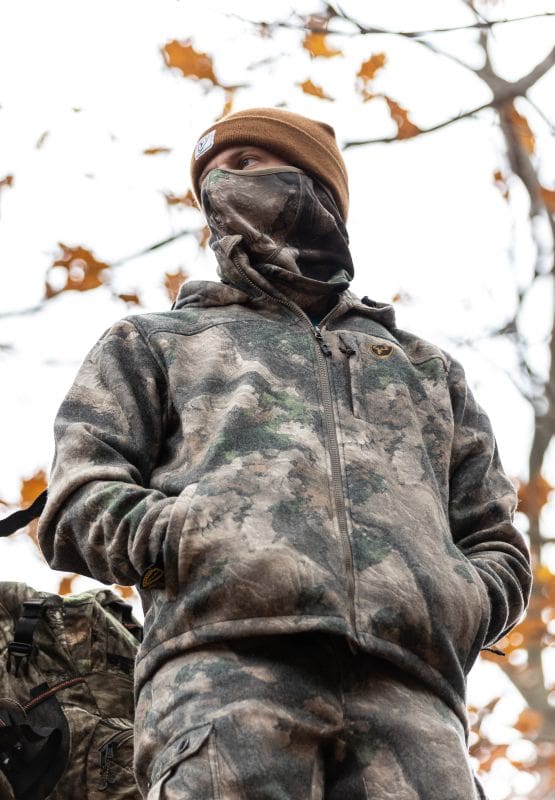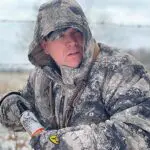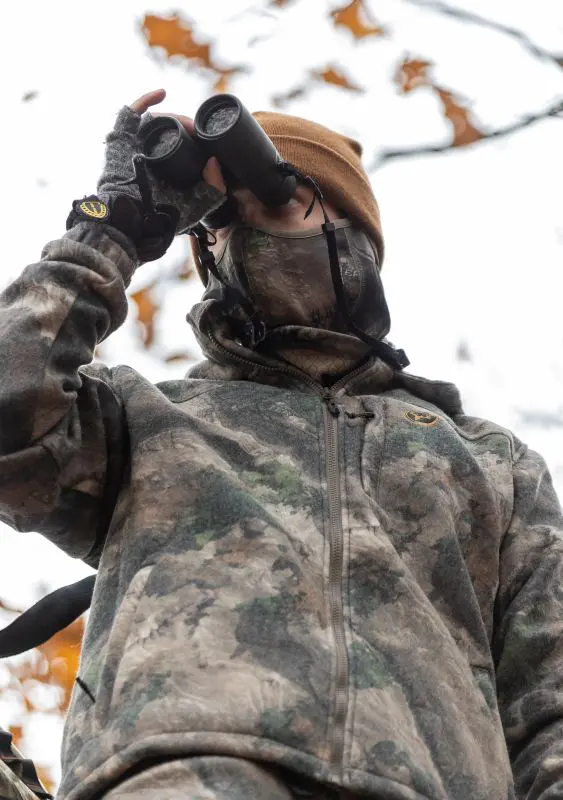Successful deer hunting isn’t just about being in the woods; it’s about being in the right place at the right time. Early in the season, when deer are still following summer food patterns and pressure is low, one of the smartest moves a hunter can make is to slow down and gather information. Rushing into your best stand too early can alert deer and shut down a spot before the season even starts. That’s where observation and understanding wind and thermals come into play.
An observation sit is exactly what it sounds like: the hunter sets up at a distance where they can see plenty of ground without risking their scent or presence spooking the deer. These sits are best done on the edge of fields, food plots, or openings that deer frequent in the evenings.
On an early-season hunt in southern Missouri, I was back on a private farm I’d hunted many times before. For some reason, the intel from my summer trail cameras wasn’t giving me a clear picture of where or when to set up during those first weeks of archery season. After mentioning the lack of buck activity to the landowner, he suggested I try a different part of the farm where he had recently seen several bucks. Running short on time, I set up a cellular trail camera in that area and monitored it for a week to track movement patterns.

Once the season opened, I was still second-guessing where to hunt. I didn’t want to waste precious days, but I also didn’t want to rush and make the wrong move. That’s when I came up with a new idea. Using a large tractor parked next to a row of hay bales, I turned the equipment into a makeshift observation stand. From there, I could watch both a field and a deep ravine in the evenings, hoping to learn exactly when and where the bucks were moving.
On the first weekend of October, I headed back in to hunt. Sure enough, on October 3rd at 6:00 p.m., a mature buck stepped into the field at the same spot I had scouted. This time, I was ready with my bow, and I was able to arrow the buck, kicking off my season with a bang.
When using vantage points for observation or scouting, you can glass large areas to see where deer enter and exit, which trails they prefer, and how they behave as light fades. This same method works when you’re scouting from a stand. Hunters can also sit in their treestand, blind, or a tree saddle to observe deer, allowing them to gather real-time intel without educating the deer they plan to hunt later.
While observation sits help you figure out where deer are moving, paying attention to wind and thermals tells you when and how to move in for a kill. Wind is straightforward; it carries your scent. You never want your scent blowing into the area where deer are coming from or bedding. But thermals are a bit different. They are air currents created by temperature changes and are just as critical, especially in hilly or uneven terrain. In the morning, as the sun warms the ground, thermals rise and carry scent upward. In the evening, as the air cools, thermals drop and pull scent down into valleys and low areas. Ignoring these daily shifts can betray your presence even if the wind seems favorable.
Knowing when it’s the right time to hunt after scouting from a distance comes down to combining observation, wind, and thermals. Use observation sits to pinpoint where bucks are entering fields or feeding during daylight, but don’t move in until the wind and thermals are in your favor. If the wind is swirling or thermals are pulling your scent toward bedding areas, hold off.
One of the most valuable tools hunters have today is the use of apps like HuntStand or DeerCast. These platforms give location-specific forecasts that include wind and thermal data, helping you plan several days ahead. When the conditions line up, that’s when it’s time to make your move. If the wind and thermals don’t cooperate, stay out. That’s just as important as hunting. For example, if you push into a stand two or three times when conditions aren’t right, deer will pick up your scent, spook, and potentially shift their patterns altogether, erasing all the work you’ve put into scouting. When conditions finally set up in your favor, slip in from the downwind side, move quietly, and hunt with confidence knowing you’ve stacked the odds in your favor.

This careful approach requires patience, but it pays off. By resisting the urge to rush in and by using observation sits to gather intel while monitoring wind and thermal behavior, you set yourself up to make your first hunt in a stand your best hunt. Instead of hoping to get lucky, you’ll be executing a calculated plan based on deer patterns and invisible air currents, the two things that dictate success more than any gear or gadget ever will.


